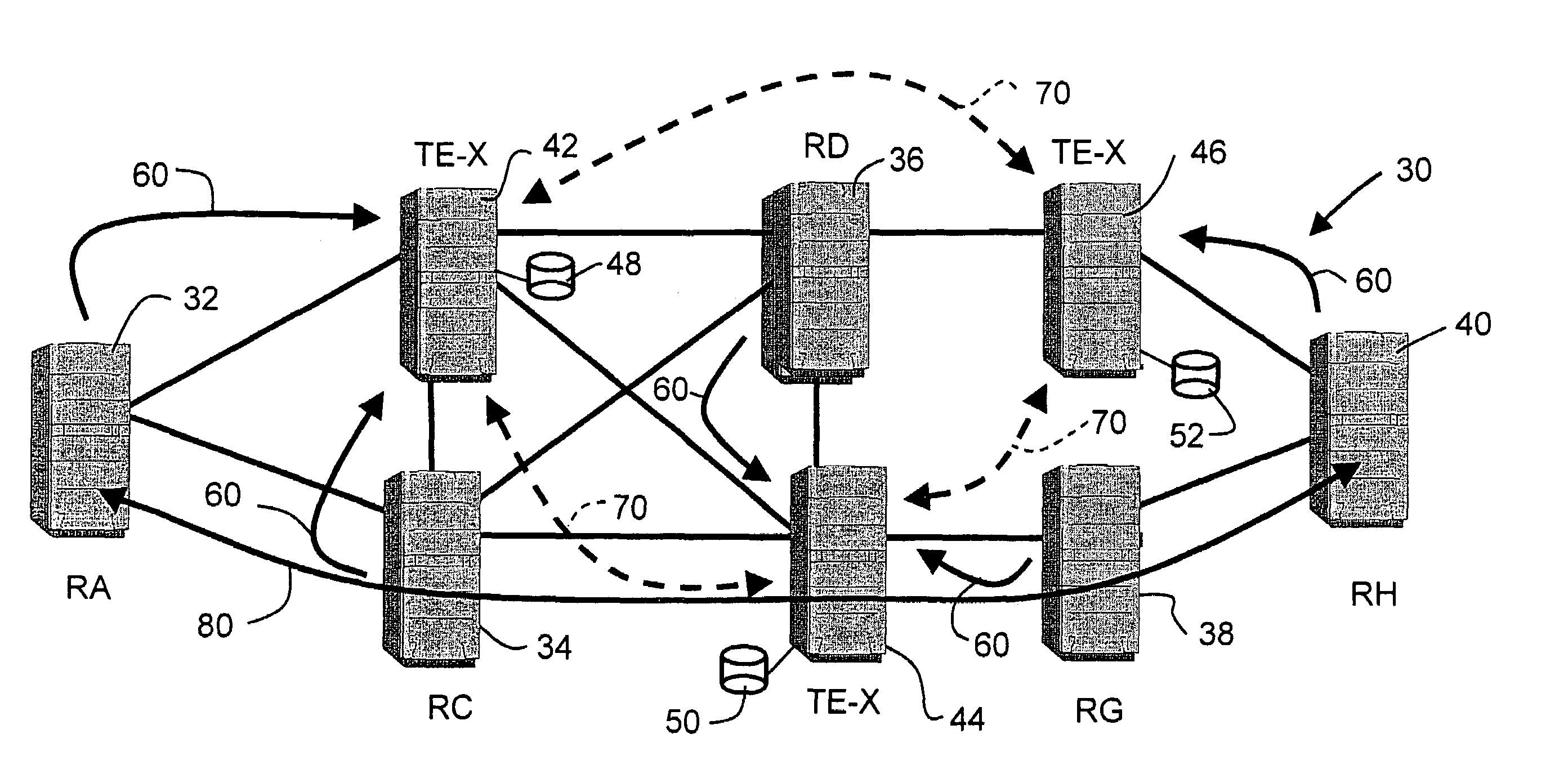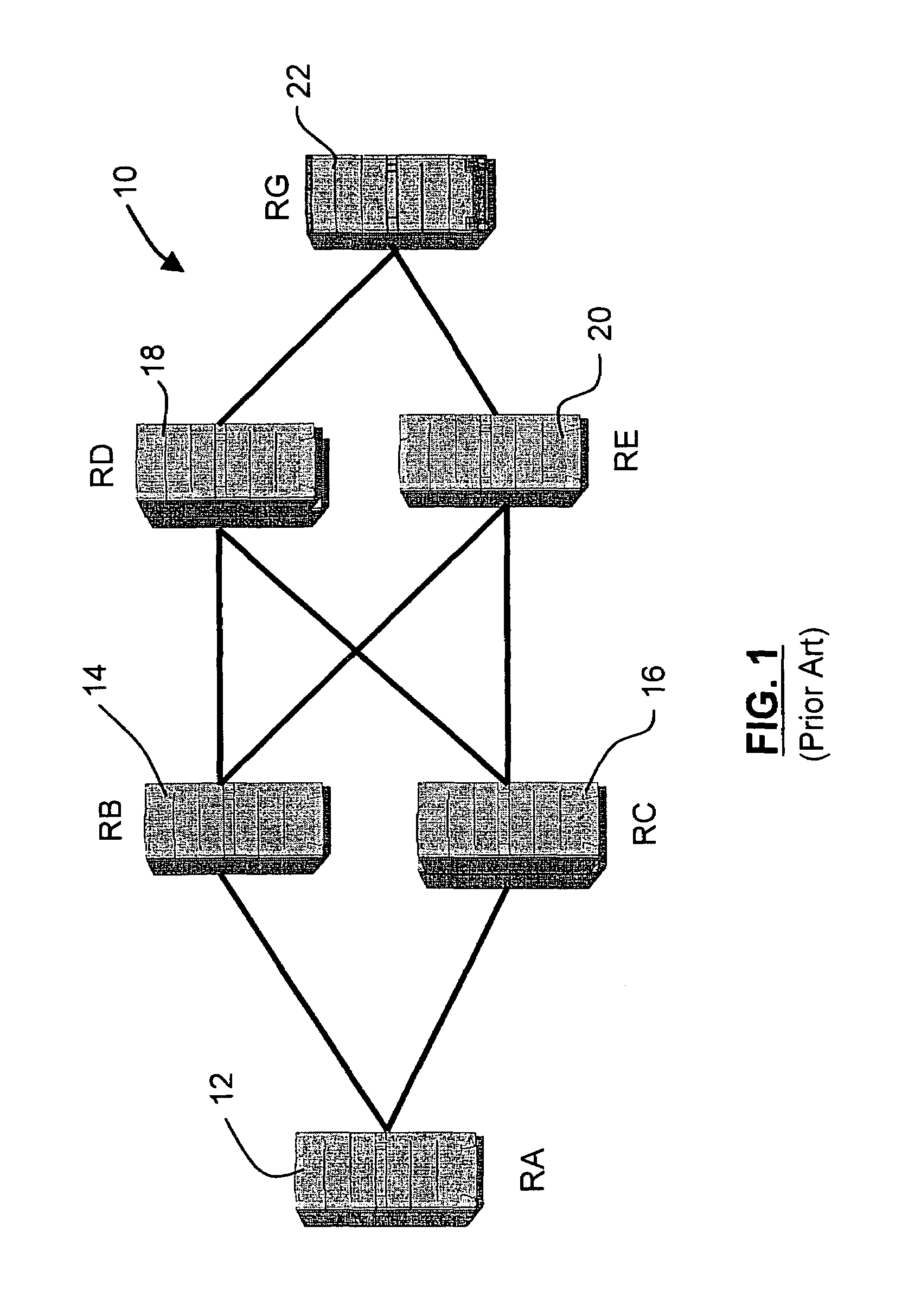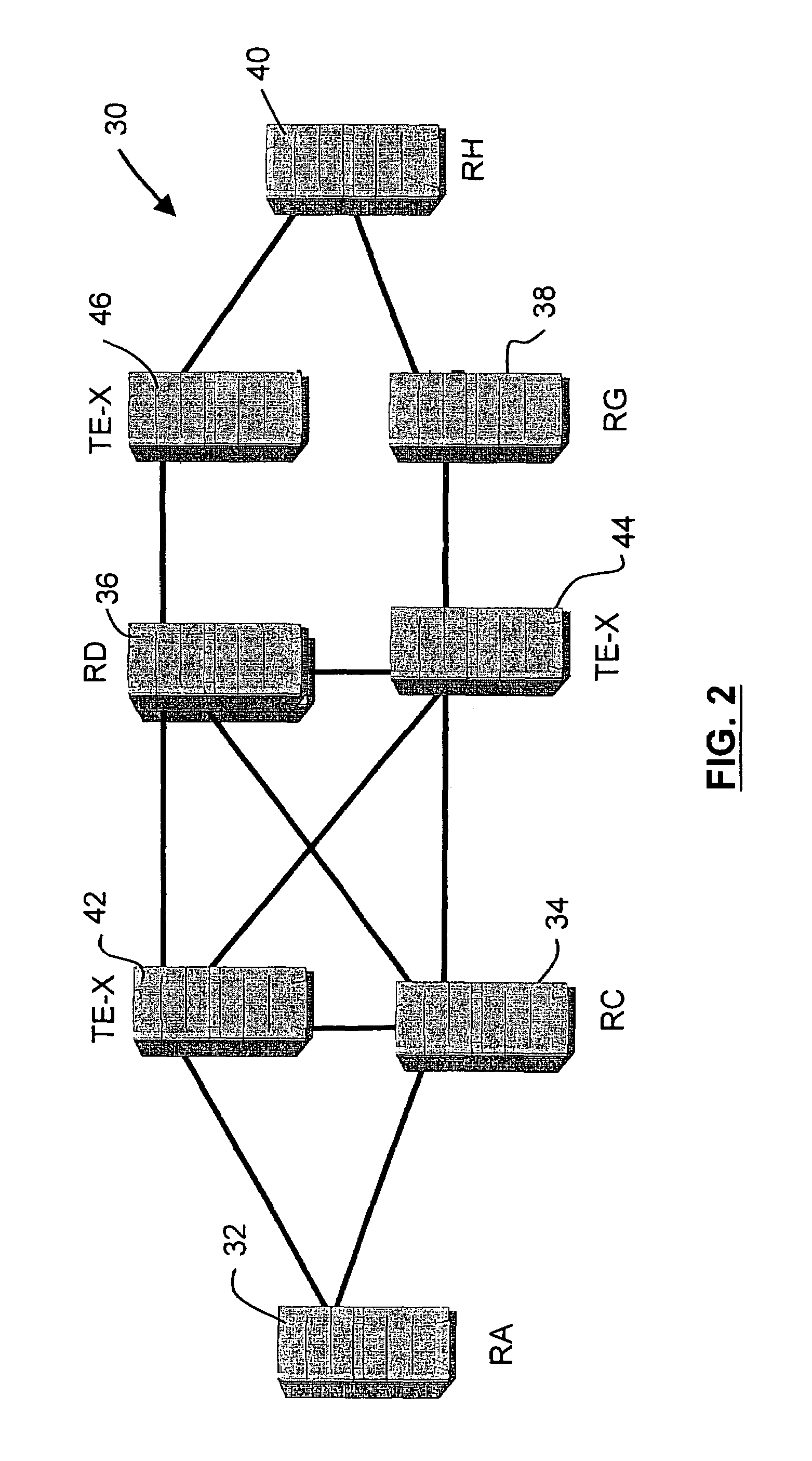Constraint route dissemination using distributed route exchanges
a distributed route and routing technology, applied in the field of routing control in data networks, can solve the problems of requiring a large amount of processing power and memory in the ospf router, requiring the provision of high-speed processors and a large amount of memory in the router, and reducing the computing power and memory required for most routers in the network. , the effect of saving network resources
- Summary
- Abstract
- Description
- Claims
- Application Information
AI Technical Summary
Benefits of technology
Problems solved by technology
Method used
Image
Examples
Embodiment Construction
[0022]FIG. 2 is a schematic diagram of an Internet Protocol (IP) network 30 in accordance with the invention that uses the OSPF routing protocol. The network 30 includes a plurality of interconnected to routers 32–40 and three traffic engineering route exchange routers (TE-X) 42–46, for the sake of example. As will be explained below in more detail, the TE-Xs 42–46 receive Traffic Engineering Link-State Advertisement messages (TE-LSAs) from the routers 32–40 and use the LSAs to construct a traffic-engineering database (TE-database) 48–52. The TE-databases 48–52 are used to store explicit routes between edge routers (32 and 40, for example) in the IP network 30.
[0023]FIG. 3 schematically illustrates the TE-LSA message exchanges in the IP network 30 in accordance with the invention. TE-LSAs sent from the OSPF routers 32–42 are shown as solid lines 60, whereas TE-LSAs sent from TE-Xs to other TE-Xs to synchronize the TE-databases 48–52 are shown as dashed lines 70. As will be explained...
PUM
 Login to View More
Login to View More Abstract
Description
Claims
Application Information
 Login to View More
Login to View More - R&D
- Intellectual Property
- Life Sciences
- Materials
- Tech Scout
- Unparalleled Data Quality
- Higher Quality Content
- 60% Fewer Hallucinations
Browse by: Latest US Patents, China's latest patents, Technical Efficacy Thesaurus, Application Domain, Technology Topic, Popular Technical Reports.
© 2025 PatSnap. All rights reserved.Legal|Privacy policy|Modern Slavery Act Transparency Statement|Sitemap|About US| Contact US: help@patsnap.com



